Moroccan cuisine: an amazing experience of spices, sweets and traditions
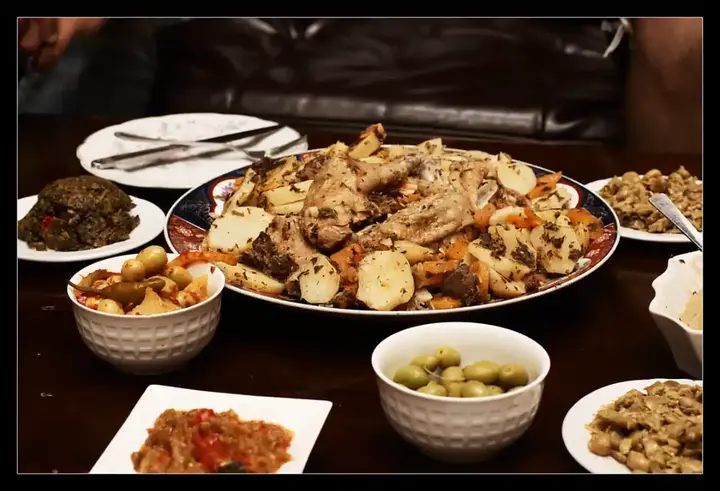
Moroccan cuisine is an expression of the richness and diversity of Morocco's heritage, as it combines ancient traditions, heritage and culture that have been formed over the ages and centuries, and in this article we will provide an overview of popular Moroccan cuisine, its components, its most important dishes and its role in Moroccan culture.
Show key points
- Moroccan cuisine is a unique fusion of diverse cultural influences, including Arab, Andalusian, Amazigh, French, Jewish, and Middle Eastern traditions.
- Traditional Moroccan dishes like tagine, couscous, and harira are central to the country's culinary identity and are often prepared with rich spices and served during special occasions.
- Cooking techniques in Moroccan cuisine involve traditional methods such as slow-cooking in a tagine, manual preparation of ingredients, and the generous use of local oils and spices.
- ADVERTISEMENT
- Seasonal availability and regional environments greatly influence Moroccan cuisine, with ingredients and recipes adapting to nature’s offerings throughout the year.
- Preserving Morocco’s culinary heritage faces challenges from economic changes, globalization, and environmental issues like drought and climate change.
- Popular chefs and international figures exploring Moroccan cuisine help promote its global recognition and celebrate its deep cultural roots.
- Moroccan food is deeply tied to social customs, celebrations, and rituals, reflecting a longstanding heritage passed down through generations.
The history of popular food in Morocco and its relationship to celebrations and seasons
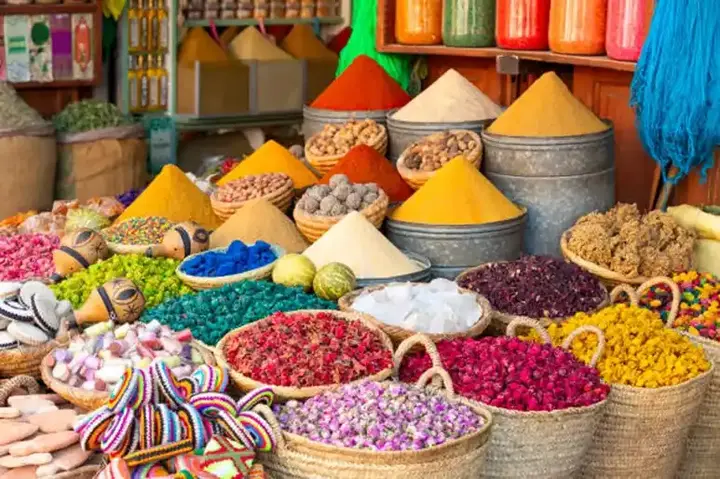
A popular cuisine as diverse as Moroccan cuisine cannot be found anywhere in the world, because Moroccan cuisine is a mixture of Andalusian, Arab, Amazigh, Middle Eastern, African, French, Jewish...
The history of Moroccan cuisine dates back to very ancient periods, where many cultures and rich historical overlaps in the region formed the basis for its development. Moroccan cuisine reflects the cultural and historical diversity and authentic heritage of the Kingdom
Recommend
In the pre-Islamic period, Moroccan cuisine was mainly based on local resources such as grains, meat, fruits and vegetables. After the Islamic conquest, Arab culture introduced new culinary traditions and food ingredients such as rice and spices that influenced the diversity of popular local food.
In the Middle Ages, Moroccan cuisine was influenced by Andalusian culture, through Andalusian Muslims fleeing the Spanish Inquisition where many new cooking techniques and new ingredients such as saffron, almonds and nuts were introduced.
During the French colonial period, cultural interactions with French cuisine influenced the development of some dishes and the introduction of some new culinary styles.
The most delicious popular dishes in Morocco
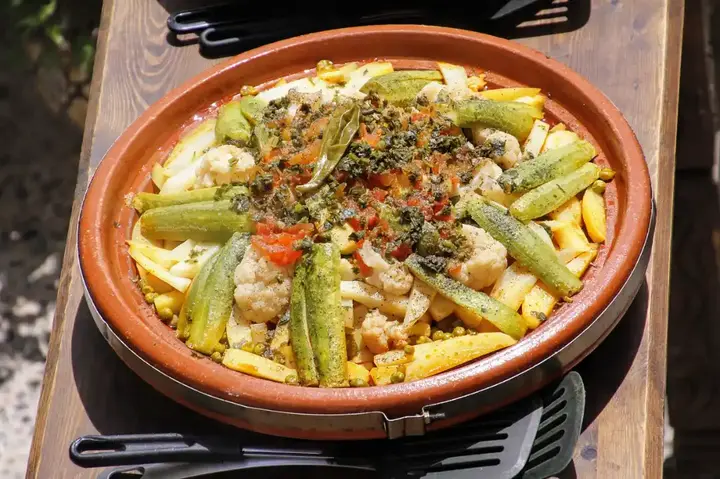
Moroccan cuisine is famous for its diversity and richness in distinctive traditional dishes that are an integral part of the heritage, as it uses herbs and spices elaborately to give an authentic character to the dishes. Among the most famous Moroccan folk dishes that express this rich heritage we find:
1. Moroccan crowns: The tagine is one of the most famous traditional dishes in Morocco, as it features a mixture of meat or chicken with vegetables with famous Moroccan spices such as saffron, cumin and ginger. The crowns are served in a special bowl known as the crowns, and are considered a symbol of Moroccan hospitality.
2. Moroccan Harira: Harira is one of the original Moroccan popular dishes, as it is prepared from minced meat, rice and spices, covered with a layer of dough and baked in the oven. It is offered at special events and celebrations.
3. Moroccan Couscous: One of the famous dishes in Morocco is couscous, a dish of fine semolina cooked with steam and served with meat, vegetables and spices. Couscous is an important part of Moroccan tradition and is eaten on holidays and special occasions.
Secrets and cooking techniques in Moroccan popular cuisine
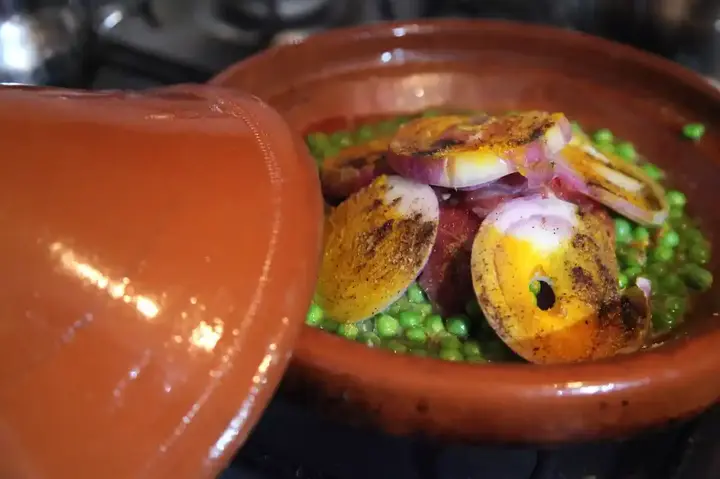
Moroccan folk cuisine features many secrets and techniques that reflect a rich heritage and traditional skills. Here are some of them:
1. Use of spices: Spices are an essential part of Moroccan cuisine as they are used to impart a distinctive taste such as cumin, ginger, cinnamon, and coriander.
2. Tajine cooking method: Tajine is part of the heritage in Moroccan food, where all the ingredients are placed in the crowns and placed in the oven or on charcoal, which gives a distinctive taste due to the crowns and charcoal, on which cooking is a special technique in itself.
3. Use of oils and fats: Oils and fats are abundant in Moroccan cuisine.
4. Manual preparation: Manual preparation of ingredients is an essential part of the cooking process in Moroccan popular cuisine, where hands are used to prepare pastries, roll couscous, and shape food accurately and professionally.
The impact of the environment and the season on Moroccan popular cuisine
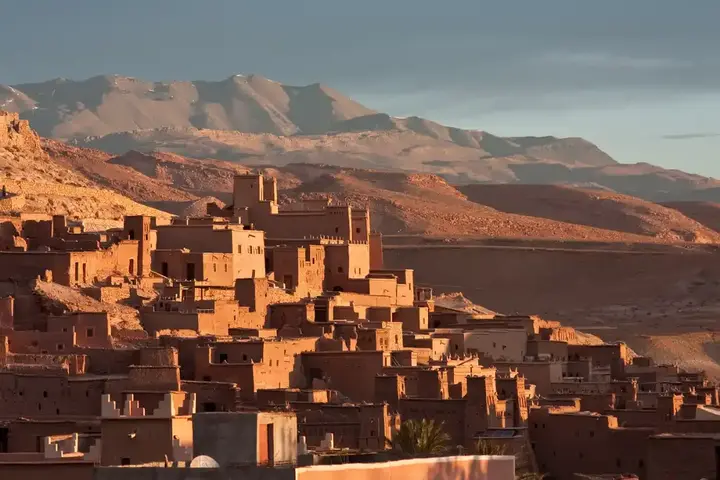
The influence of the season is evident in Moroccan popular cuisine, where ingredients and foods are selected based on what nature has to offer in each season.
For example, in winter, root vegetables such as carrots and potatoes are best used in food because they are abundant, while tomatoes and peppers are used in the summer for their availability. Some recipes also rely on seasonal ingredients such as harira, which depends on the availability of grains in winter.
For example, in rural areas, people rely on local grains and vegetables such as whole grains, almonds and vegetable oils, while in coastal areas, dishes containing fish and seafood abound. In addition, the dishes are organized according to the seasons of fruits and vegetables, where the food is more tasty and nutritious during their natural seasons. For example, in the apple season, apples are added to many dishes such as tagines, salads and desserts, enhancing their taste and nutritional value. This sensitive interaction with the environment and the season reflects the connection of Moroccan cuisine with nature and the preservation of the region's food heritage.
Challenges of preserving Morocco's traditional food heritage
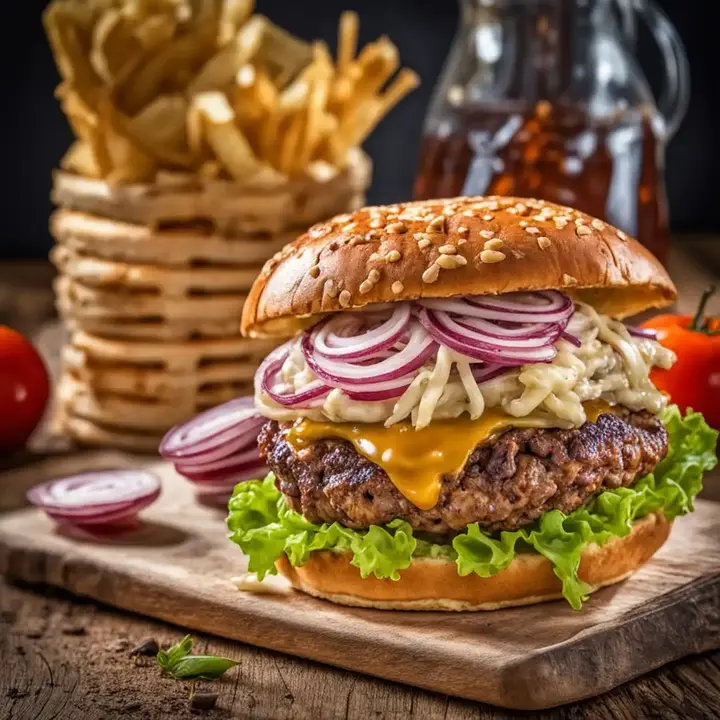
Moroccan folk cuisine faces several challenges to preserve its heritage, including:
1. Impact of economic changes: High food prices can make it difficult to access some of the basic ingredients of Moroccan folk cuisine such as meat and fine spices.
2. Consequences of globalization and marketing pressures: The proliferation of fast food restaurants and takeaways and the preference of young people for fast food and Western food due to the promotion of Western meals through the media and social media can lead to a decline in the popularity of popular cuisine, threatening to fade the local food heritage.
3. Environmental challenges: Climate change and drought may affect the production of basic agricultural and animal materials for popular cuisine.
These challenges need to be addressed by giving priority to the preservation of food heritage, encouraging and promoting the spread of popular cuisine and raising awareness of the importance of Morocco's traditional recipes and their cultural and cultural significance.
Stories of chefs and connoisseurs of traditional food in Morocco

Celebrities participating in Moroccan folk cuisine experiences can inspire and promote popular food culture, cultural tourism and Moroccan heritage. This could include celebrities such as celebrity chefs Jamie Oliver and Gordon Ramsay, who have visited Morocco on their TV shows to discover and experience popular Moroccan cuisine. Their own kitchen. These experiences can inspire celebrities and followers alike, and enhance their understanding of Morocco's culture and food heritage.








